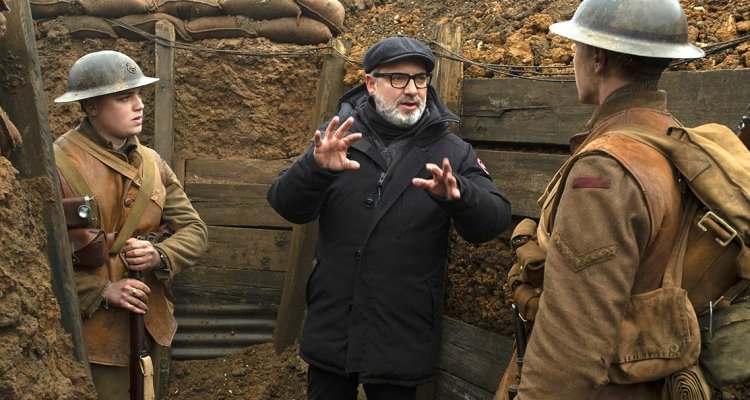Sam Mendes is back in the game. Well, he’s back in the prestige filmmaking business that is. After a five year or so jaunt helming the critically acclaimed 007 thrillers “Skyfall” and its follow up, “Spectre,” the “American Beauty” and “Road to Perdition” director is tackling a decidedly more serious and awards-friendly subject, the first World War.
READ MORE ‘1917’: Sam Mendes Crafts An Epic, Harrowing & Visceral Modern-Day War Classic [Review]
Inspired by tales from a grandfather who served in the Great War, “1917” follows two British Lance Corporals (George McKay, Dean-Charles Chapman) as they are charged with delivering an essential do-or-die message to forces further up the front. If those troops move forward, they are being set up for an ambush. Getting the message there in time means the lives of 1,600 men are on the line.
READ MORE: The Best Cinematography Of The Decade [the 2010s]
The subject matter isn’t necessarily the most original wartime tale, but Mendes and legendary cinematographer Roger Deakins‘ decision to shoot the film as effectively “one take” is. The production had to build massive sets recreating the trenches across the English countryside and for the camera and actors to walk through. It also meant months of rehearsals for both the actors and crew before proper filming began.
READ MORE: The 100 Best Films Of The Decade [the 2010s]
Mendes, who has already been nominated for a Golden Globe for directing the Universal Pictures release, sat down to discuss his thought process behind making the film and how tackling those Bond movies gave him the “confidence” to try something this epic.
____
I’m fascinated by the idea that it was inspired by stories your grandfather told you as a child. Was turning those tales into a movie something that you’ve been thinking about for a while?
I hadn’t thought about making a film about it until after my last movie. Obviously, the story was always with me, and my grandfather told me it when I was a kid, and I never forgot it. When I say the story, the many stories he told me. But it was only after doing “Spectre” that I thought it was time to try perhaps and write something of my own. And this was the story that compelled me to tell it, you know? It was an image that he left me with, of one man carrying a message in No Man’s Land. That image of that little man. He was a small man alone in that vast misty landscape. That was the thing that inspired this movie, and then we even developed it and enlarged it from that point.
How long did it take before you realized that this was a project you wanted to do design in such long, continuous takes?
It sort of all came at the same time. The moment I decided it was a story that should take place in two hours of real-time, I felt that it would be most exciting if it were one continuous take, one continuous shot. And [those] two things were hand in hand and were baked into the script from a very early stage, which I think is probably the only way to do it. I think if you impose it on material after the point, it’s been written, and I think it’s probably not the right way to go about it.
Did you call Roger Deakins during the screenwriting process to see if he was on board?
I finished the screenplay first, because I wanted to be sure that it worked and I wanted to know that it was something that other people wanted to make. So, I sent it to him when I was finished, and I also thought no one’s going to say yes to an idea, but they might say yes to a script. So, I send it to him very, very early on after I’d finished it. And on the front, it said, “This movie is written and designed to be one continuous shot.” So, he read it with that in mind. And when he called me up, he only had one question, which was, “Why?” And once I had answered that question to the best of my ability, he said, “Yes, I’ll do it.”

I read that you chose it set the picture during a period when the Germans had retreated past this Hindenburg Line or to this Hindenburg Line. Considering the vastness of the war, what made you pick that particular period to set it in?
In a way, it made up my mind for me, because I thought if my story is about someone carrying a message, most of this war is a war of paralysis. It’s a very static war, and people were trapped for literally years in one place. Hundreds of thousands of men lost their lives fighting over 200 yards of land. There was this moment in the war that I discovered, when the Germans retreated, and overnight, they just disappeared. And the British didn’t know whether they’d surrendered, if the war was over, if it was a trap [or] any of those things. And it seemed to me the perfect opportunity to cut these characters adrift in this vast landscape and, at the same time, not let the audience know what was up ahead of them.


